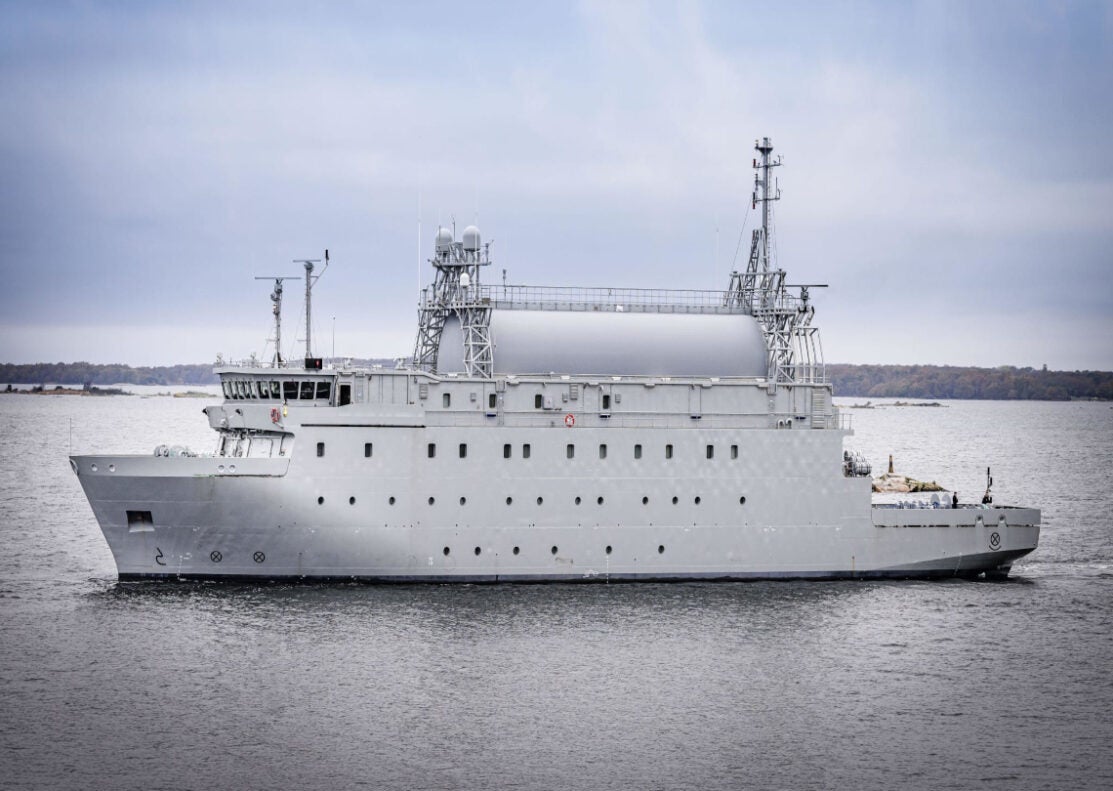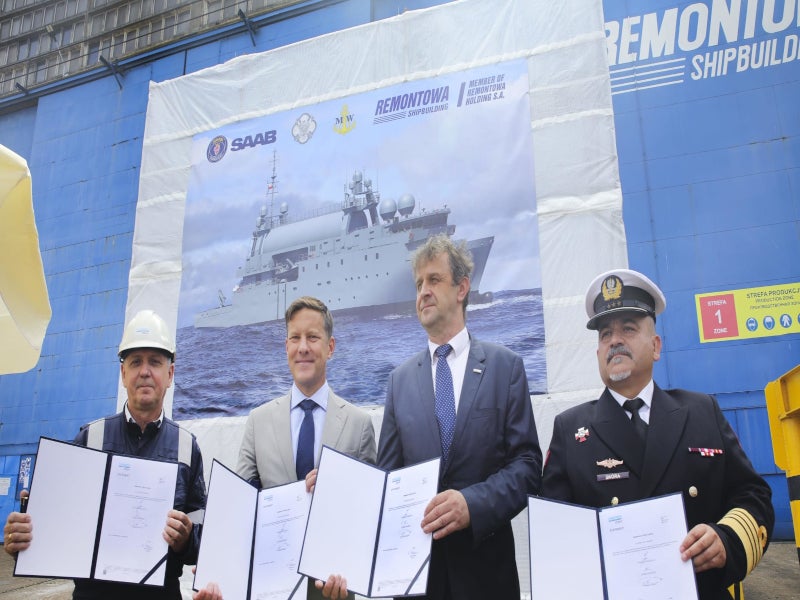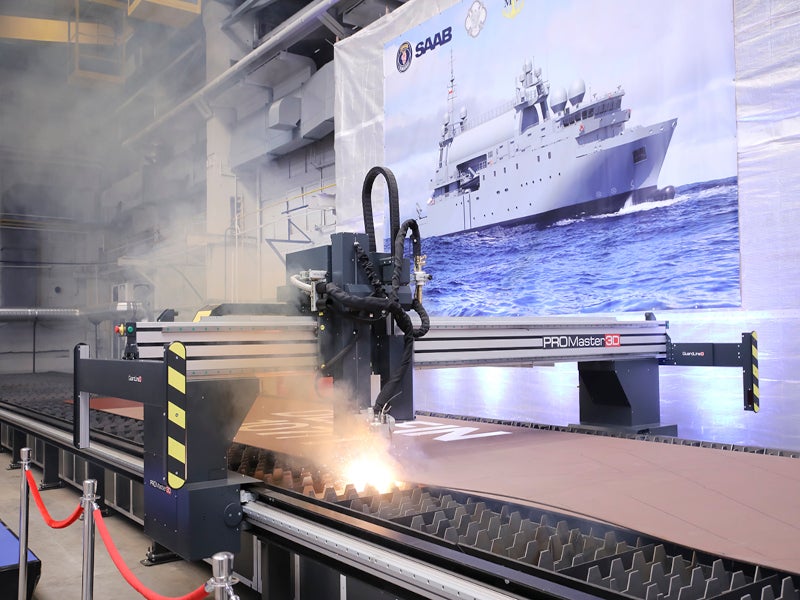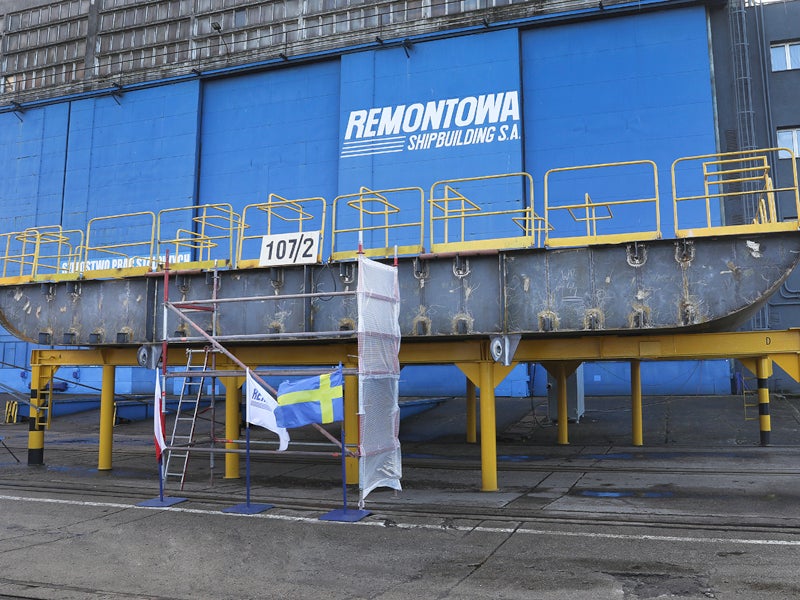Saab Kockums, a shipbuilding company based in Sweden, is designing and building two signals intelligence (SIGINT) ships for the Polish Navy.
The ships are being built at the Polish shipbuilder Remontowa Shipbuilding’s (formerly Northern Shipyard) shipyard in Gdansk, Poland.
The ships will replace the Polish Navy’s ageing Project 863 Moma-class radio reconnaissance ships, ORP Navigator and ORP Hydrograf, which were built in 1975 and 1976 by Remontowa Shipbuilding.
The construction of the first-of-its-class Saab Naval SIGINT System ship commenced with the steel-cutting ceremony in April 2023.
The keel-laying ceremony for the ship was held in July 2023. The vessel is named ORP Jerzy Rozycki in honour of the distinguished mathematician who played a significant role in deciphering the German Enigma code during the Second World War.
The steel-cutting ceremony for the second SIGINT ship, named ORP Henryk Zygalski, was held in November 2023 and was followed by a keel-laying ceremony in January 2024.
The ships are expected to be delivered in 2027.
Polish SIGINT ships development timeline
The Polish Ministry of Defence’s Armament Agency awarded a contract worth Skr6.7bn ($642.7m) to Saab for the design, construction, delivery and logistics support of two SIGINT ships as part of the Delfin or Dolphin programme for the Polish Navy in November 2022.
The details of the contract were finalised in December 2022. Saab holds responsibility for the design, production and delivery of the ships, including the integration of the entire advanced mission system onboard.
BSJP | bnt, a Polish law advisor, advised Saab on the signing of the contract.
Saab consequently awarded the shipbuilding contract to Remontowa Shipbuilding, which is responsible for construction and will perform the necessary tests.
Signals intelligence ships design details
The ships will be highly reliable and advanced SIGINT-type radioelectronic reconnaissance vessels designed to facilitate the gathering of intelligence data, encompassing a wide range of naval intelligence capabilities.
They will be similar to those of the new SIGINT ship HMS Artemis, its Swedish counterpart, due to the use of several common designs and technological solutions. They are expected to be approximately 74m long, like HMS Artemis, and to feature high autonomy, allowing them to function for extended periods without the need to visit a port.
The ships will undergo Harbour Acceptance Tests and Sea Acceptance Tests which will be followed by retrofitting with specialised intelligence systems.
Operational details
The vessels are designated for reconnaissance operations, encompassing the examination of their respective regions, along with the compilation of information benefiting their naval forces and intelligence operations, rather than hydrographic undertakings.
Consequently, the ships will prioritise advanced intelligence, surveying and research apparatuses over substantial armaments, facilitating proficient surveillance of foreign naval assets, vessels and maritime installations including harbours, gas terminals and offshore wind farms.
Contractors involved
Teknotherm, a subsidiary of Heinen & Hopman, was contracted by Saab to supply heating, ventilation, and air conditioning and refrigeration systems for the new ships.
Saab’s Swedish SIGINT ship details
Saab entered an agreement with the Swedish Defence Material Administration for the supply of a specialised vessel designed for SIGINT purposes in April 2017. The contract was valued at Skr730m.
The 74.6m-long and 14m-wide SIGINT ship HMS Artemis was launched in April 2023 to replace the existing ageing HMS Orion vessel, which was launched in 1984.
The SIGINT vessel has a displacement of 3,000t, featuring 35 cabins and 40 bunks. It features better accommodation facilities aboard with improved electromagnetic compatibility capabilities and manoeuvrability. It is also equipped with sensors for naval intelligence.
The ship is powered by four diesel generators with 990kW output.







